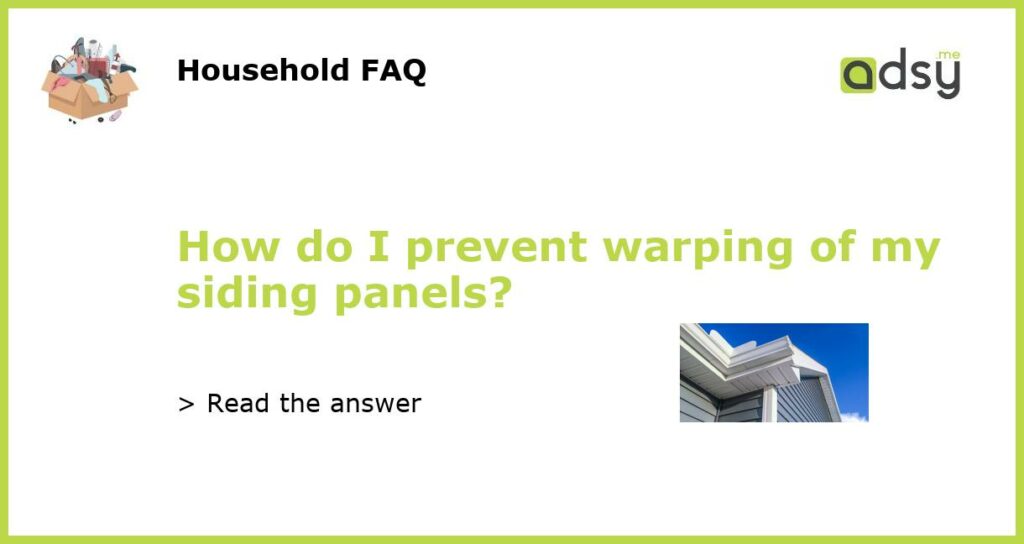Understanding the causes of warping
Before diving into prevention methods, it’s important to understand the common causes of warping in siding panels. One of the main culprits is moisture. When water or excessive humidity penetrates the wood, it can cause the panels to expand and contract, leading to warping over time. Another factor is improper installation. If the panels are not securely fastened to the wall or if they are installed too close together, they may not have enough space to expand and contract naturally, causing warping. Lastly, the quality of the wood used in the siding can also play a role. Low-quality wood or wood with defects may be more prone to warping.
Choose the right type of siding
Selecting the appropriate type of siding is essential in preventing warping. Some types of siding are more resistant to moisture and warping than others. Fiber cement siding, for example, is known for its durability and resistance to warping and moisture damage. Vinyl siding is also a popular choice as it is highly resistant to warping and does not absorb water. If you prefer the natural look of wood siding, consider using cedar or redwood, which are less prone to warping due to their natural resistance to moisture.
Proper installation techniques
Proper installation is crucial in preventing warping of siding panels. Make sure to hire experienced professionals or follow manufacturer guidelines if you are installing the siding yourself. It is important to leave enough space for the panels to expand and contract. This can be achieved by ensuring proper gaps between each panel and allowing for proper ventilation. Additionally, using stainless steel nails or screws that are resistant to rust and corrosion can help prevent moisture damage and warping. Be sure to follow the manufacturer’s instructions and recommendations for installation to reduce the risk of warping.
Regular maintenance and upkeep
Maintaining your siding can help prevent warping as well as detect any early signs of damage. Regularly inspect the siding for any cracks, gaps, or signs of moisture penetration. Promptly repair any damage or address the underlying issue to prevent further warping. Additionally, properly maintaining the paint or finish on your siding can also help protect against moisture intrusion and warping. Regularly clean the siding and apply a fresh coat of paint or sealant as needed to ensure its longevity and resistance to warping.
Consider adding additional protective measures
If you live in an area with high humidity, frequent rain, or extreme temperature fluctuations, you may want to consider adding extra protective measures to prevent warping. One option is to invest in a vapor barrier or house wrap, which acts as an additional layer of protection against moisture intrusion. Installing gutters and downspouts can also help redirect water away from the siding, reducing the risk of warping. Additionally, applying a weather-resistant finish or paint that specifically protects against warping can provide an extra layer of defense.

